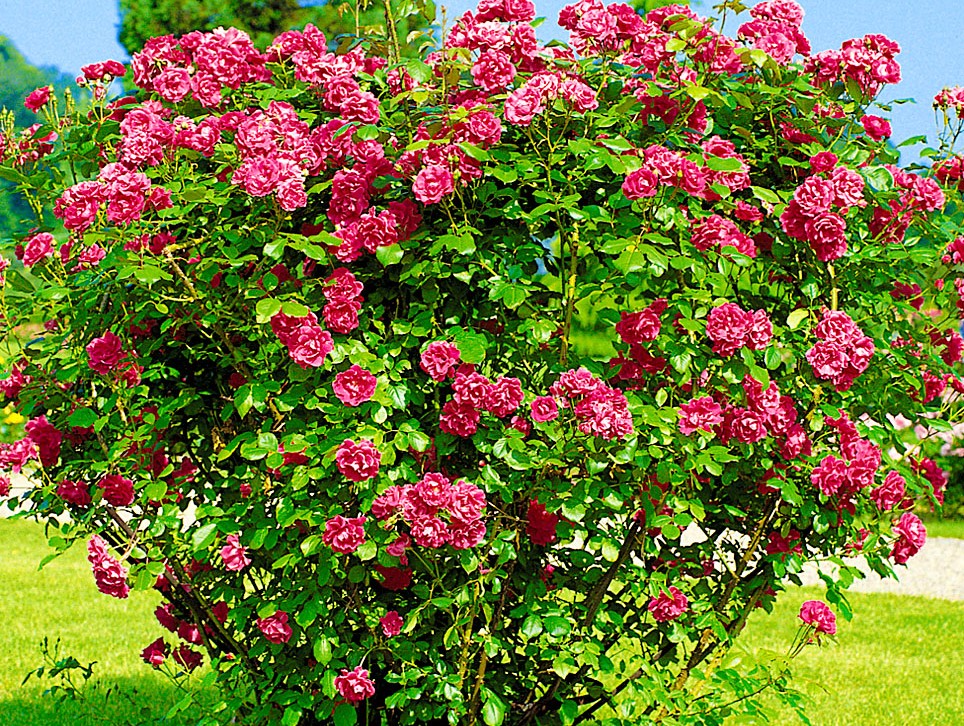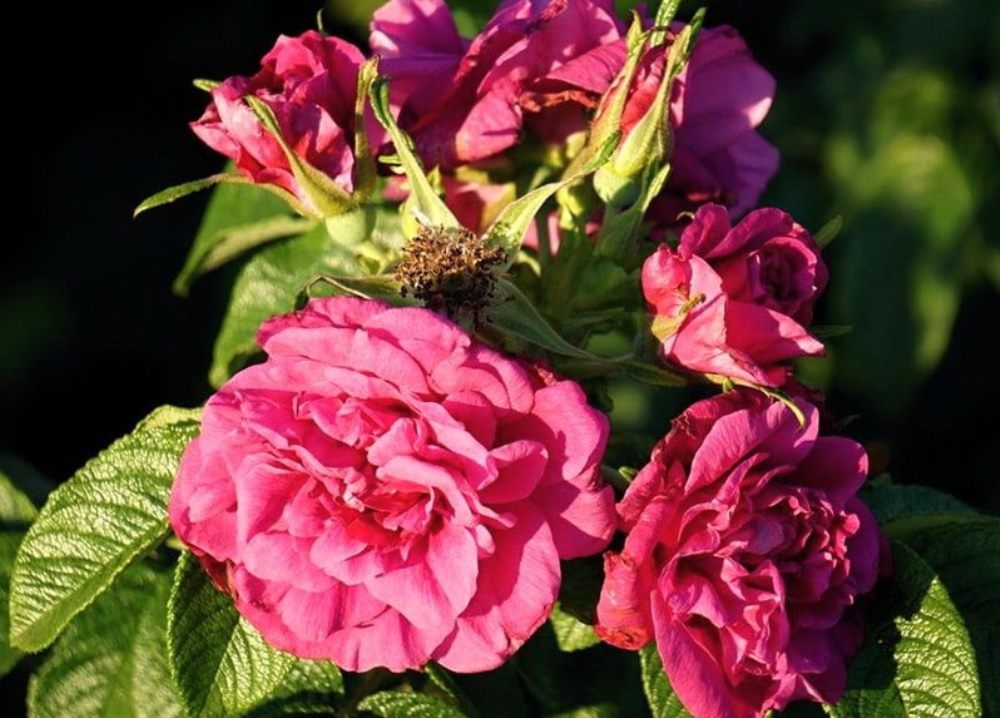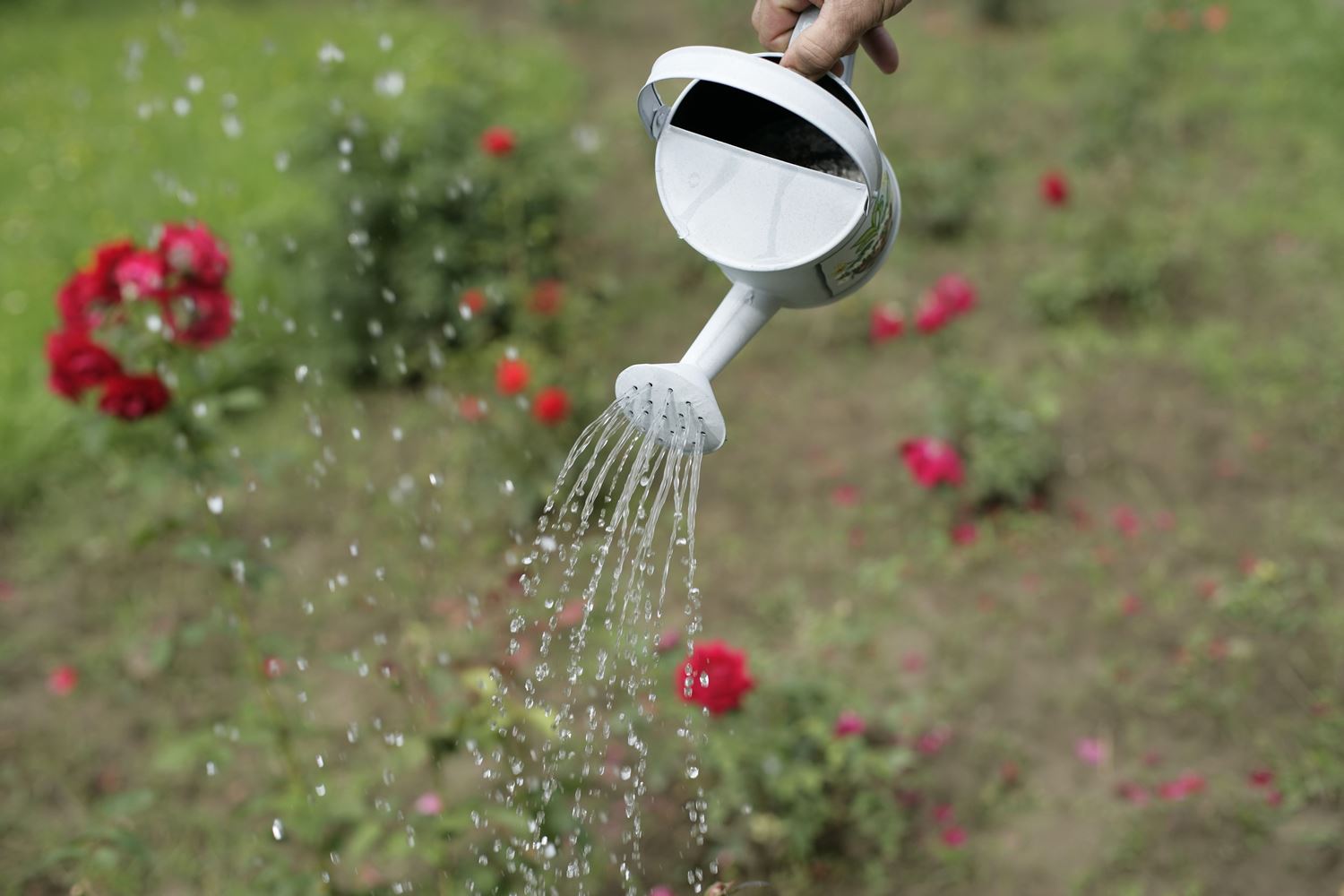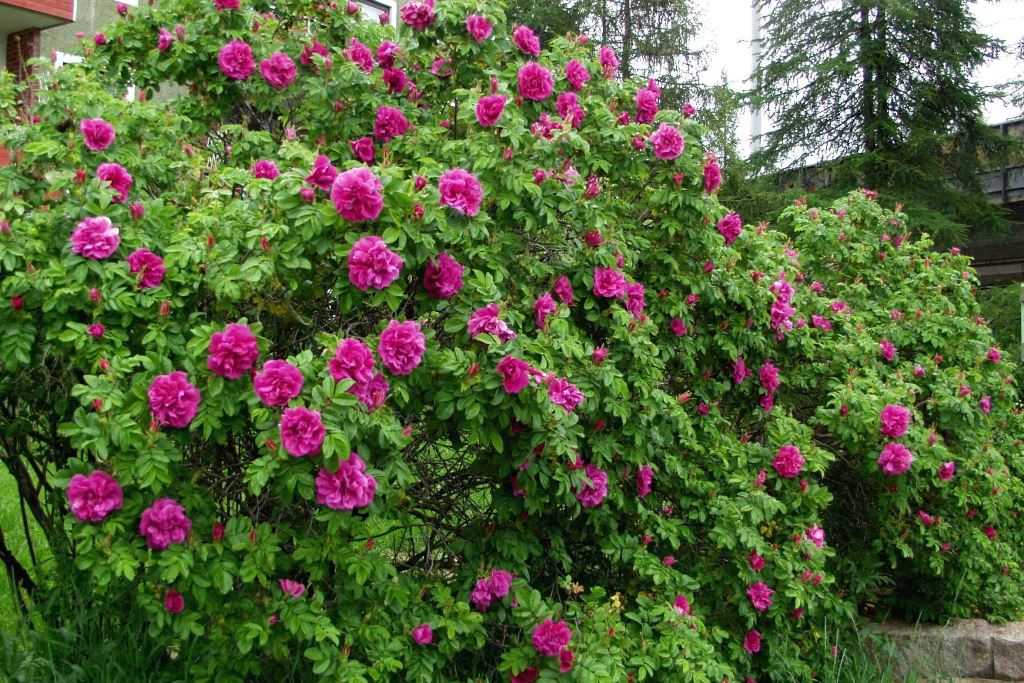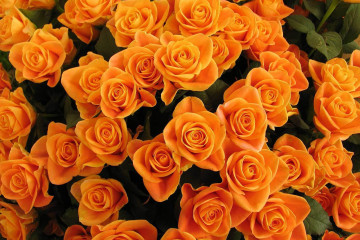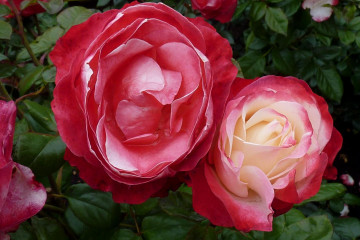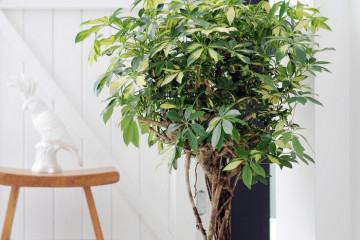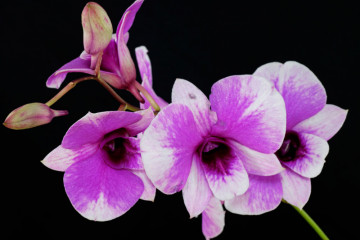Rosa Rugosa: description of varieties and hybrids, methods of planting and reproduction
Content:
Rosa Rugosa is a bright decoration for any garden. Florists loved her for her beauty and versatility. Rose petals and fruits are used in cooking and for healing. It is also called "rosehip". It is unpretentious, but you can face some difficulties when growing it.
Rosa Rugosa: botanical description
Rosa Rugosa is the name of an ornamental shrub, whose homeland is Japan. It is a hybrid of rose and rose hips. It can grow up to 2-2.5 m tall, releasing massive shoots. Most often they are covered with thorns, but there are varieties without them. The features of the plant depend on the type of Rugosa rose. The flowers appear large, smell very nice, can consist of 100-160 petals. They are semi-double. There are different shades. The rose blooms from May-June, you can admire it until the frost. After flowering, fruits are formed, they are used for treatment.
Leaves deserve special attention. They are dark green on the outside, with tubercles, serrations that are directed downward. Given this characteristic, this plant is also called a wrinkled rose. One petiole can collect about 8-10 leaves. The great advantage of the plant is the good development of the root system. As a result, the bush can calmly exist even in times of drought.
Rugosa varieties and hybrids
You can find many different varieties and hybrids of the Rugosa rose, which breeders diligently bred. Some of them deserve special attention. Below are the most popular options:
- Hansa. It is a small bush, but its flowers are of extraordinary beauty. They are large, smell good, and are purple in color. The flowers are not proportional, but this adds charm to them. In autumn, foliage changes color from green to yellow, orange and red. This is an unpretentious plant, it is easy to care for it, it tolerates winter well.
- F.J. Grothendorst. This variety is also called Nelkenrose due to its similarity to carnation. The height of the bush can reach up to 2 m. The leaves are shiny, slightly prickly. The rose easily tolerates even harsh winters.
- Grothendorst Suprim. The bush can grow up to 2 m. About 10-15 flowers appear on one stem. They are crimson in color, also somewhat similar to a carnation.
- Pink Grothendorst. The bush resembles a pyramid, it grows up to 1.5 m. The flowers of this variety are pale pink, they are small and do not smell, but with original petals - it seems that someone cut the edge.
- Alba. Pleases with beautiful white flowers that emit a light aroma. The leaves are large, turning yellow when it gets colder.
- Agnes. The height of the bush reaches 2 m. There are many thorns and thorns on the branches. When in bloom, it emits a fruity aroma. Flowers can be golden, beige. They're big. This variety tolerates frost well, but it needs to be covered, otherwise it may freeze slightly.
Important rules for growing Rugosa roses
Even a novice gardener can cope with planting and caring for a Rugosa rose. But still it is worth knowing some rules.
Landing dates
It is better to plant the plant in open ground in early spring, while the buds have not yet blossomed. Also, many gardeners plant in the autumn, but it is worth considering the selected variety. Reproduction is carried out by seeds or cuttings.
Site selection and soil preparation
Rosa Rugosa is an undemanding plant, but for planting it is better to choose a well-lit place where there are no drafts. The shrub will develop in different soils, but is more suitable with low acidity.
What you need to know about landing technology
First you need to choose the required distance between the seedlings:
- 0.7 m when creating a hedge;
- 1.5 m when other plants are planted nearby;
- 2 m if the Rugosa rose is planted alone.
The landing itself is carried out according to the following scheme:
- A hole is made, the depth of which reaches 30-40 cm.
- The earth is fertilized. Add a bucket of humus or peat to one hole.
- The plant itself is planted, it is watered abundantly, mulching is carried out. The third part of the shoots is cut off.
How to care for a rose bush
A big advantage is the unpretentiousness of the rose. Interestingly, a shrub can safely grow in one place without transplanting for about three decades, if minimal attention is paid to it.
Watering features
You rarely need to water Rugosa, using 10 liters per bush. It is enough to do this 4-5 times per season. If the weather is dry, then the procedure can be carried out more often. The root system is developed, so after 7 years, watering once a month will be enough. After that, it is useful to loosen the ground.
Top dressing
Experienced gardeners advise against feeding young seedlings. It will be required for the 3rd year of life. It is better to use mineral fertilizers that are intended for rose bushes.
After the plant begins to bear fruit, organic and mineral fertilizers should be added to the soil every 2-3 years. To make the bush happy with flowering for a long time, magnesium and iron are used. In the fall, gardeners apply phosphorus, potassium and liquid fertilizers.
Pruning
It is recommended to prune the shrub to rejuvenate it. For this, a sharp, disinfected pruner is used. The procedure is performed before winter or spring, until the buds appear. But circumcision is carried out in the 3rd year of plant life. It is necessary to remove broken shoots, root processes. Good branches are shortened by 15 cm to form a beautiful bush.
Protection from diseases and pests
Rosa Rugosa is resistant to diseases, but it can be affected by spider mites, sawflies, leafworms. If the leaves begin to turn yellow, spots appear, this may indicate the presence of fungi, the appearance of gray rot, powdery mildew, and rust.
To protect the plant you need:
- remove nearby branches, leaves, fallen fruits so that they do not rot;
- regularly carry out sanitary pruning;
- treat the plant with chemicals for prophylaxis.
If pests do appear, you should use the drugs "Karbofos", "Actellik" or others. Be sure to read the description of the instructions. Fungicides help from rot, fungi.
There are many varieties of Rugosa roses, they are original, therefore they are often used in landscape design. The bushes are planted separately or combined with other plants, for example, conifers, added to rockeries. The main thing is that it is not difficult to care for a rose.It is unpretentious, will decorate any area, giving a pleasant aroma.
